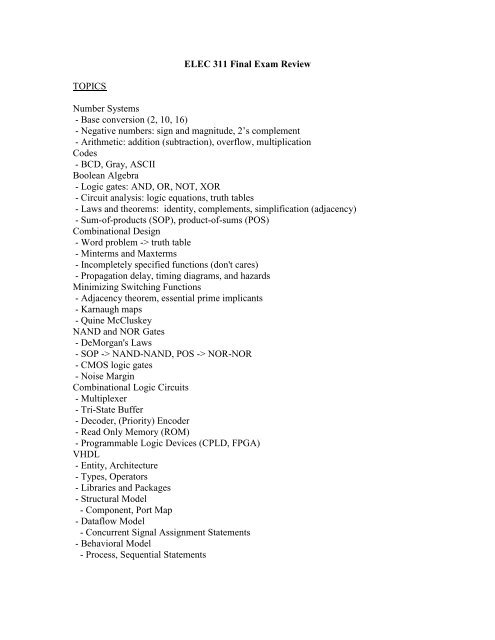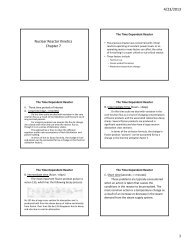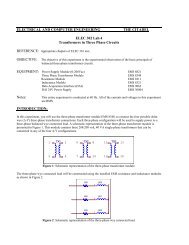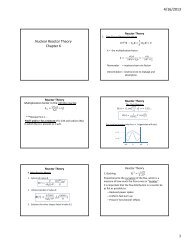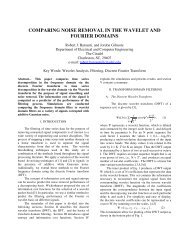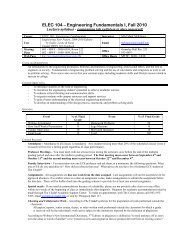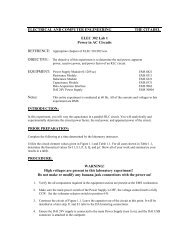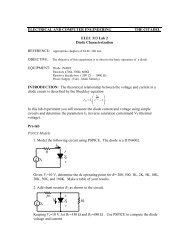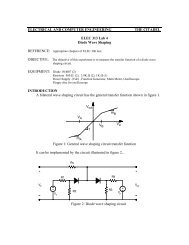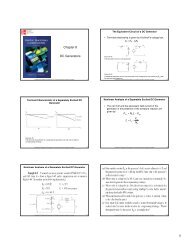ECE 331 Midterm Review
ECE 331 Midterm Review
ECE 331 Midterm Review
You also want an ePaper? Increase the reach of your titles
YUMPU automatically turns print PDFs into web optimized ePapers that Google loves.
ELEC 311 Final Exam <strong>Review</strong>TOPICSNumber Systems- Base conversion (2, 10, 16)- Negative numbers: sign and magnitude, 2’s complement- Arithmetic: addition (subtraction), overflow, multiplicationCodes- BCD, Gray, ASCIIBoolean Algebra- Logic gates: AND, OR, NOT, XOR- Circuit analysis: logic equations, truth tables- Laws and theorems: identity, complements, simplification (adjacency)- Sum-of-products (SOP), product-of-sums (POS)Combinational Design- Word problem -> truth table- Minterms and Maxterms- Incompletely specified functions (don't cares)- Propagation delay, timing diagrams, and hazardsMinimizing Switching Functions- Adjacency theorem, essential prime implicants- Karnaugh maps- Quine McCluskeyNAND and NOR Gates- DeMorgan's Laws- SOP -> NAND-NAND, POS -> NOR-NOR- CMOS logic gates- Noise MarginCombinational Logic Circuits- Multiplexer- Tri-State Buffer- Decoder, (Priority) Encoder- Read Only Memory (ROM)- Programmable Logic Devices (CPLD, FPGA)VHDL- Entity, Architecture- Types, Operators- Libraries and Packages- Structural Model- Component, Port Map- Dataflow Model- Concurrent Signal Assignment Statements- Behavioral Model- Process, Sequential Statements
Latches and Flip-Flops- Set-Reset Latch, D Latch- D Flip-Flop, J-K Flip-Flop, T Flip-Flop- Timing DiagramsRegisters and Counters- Register, Shift Register- Tri-State Bus- Counters- Sequential DesignSequential Analysis- State Tables- State Graphs- Timing Diagrams- Next State (FF) Equations- Transition TablesSequential Design- State Graphs- State Tables- Transition Tables- Next State (FF) EquationsSequential Arithmetic- Serial Addition- Add-and-Shift Multiplication
Practice Questions1. Perform the following subtraction using 12-bit 2’s complement arithmetic and verifyyour answer in base 10:1D.4 16 – 2B.6 16 = ________ 162. Design a combinational logic circuit which implements a six-sided die:a. Determine the truth table which maps inputs to outputs.b. Minimize the output functions using Quine McCluskey and Karnaugh maps.3. Given the following VHDL model, draw the schematic diagram (label completely).entity SR isport (SR_IN, CK : in std_logic;SR_OUT : out std_logic);end SR;architecture STRUCTURE of SR issignal X : std_logic_vector(1 to 2);component DFFport (D, C : in std_logic;Q : out std_logic);end component;beginFF1 : DFF port map (SR_IN, CK, X(1));FF2 : DFF port map (X(1), CK, X(2));FF3 : DFF port map (X(2), CK, SR_OUT);end STRUCTURE;4. Given the truth table below for a 2-bit shift register:a. Draw the circuit diagram using D flip-flops and 2-to-1 multiplexers.b. Determine the next-state equations for the flip-flops.c. Fill in a transition table.Input Next StateFunction S Q1 + Q2 +Hold 0 Q1 Q2Swap 1 Q2 Q1


